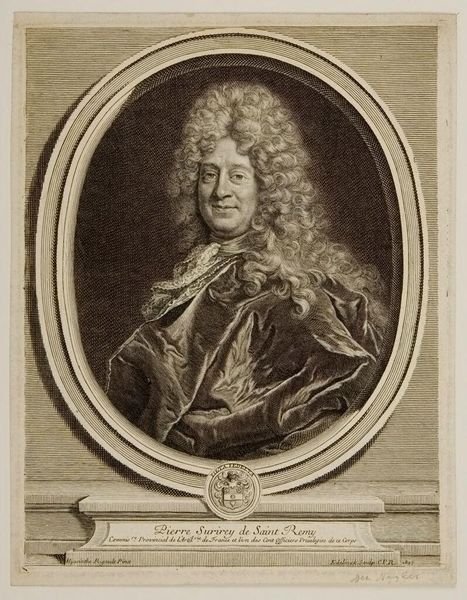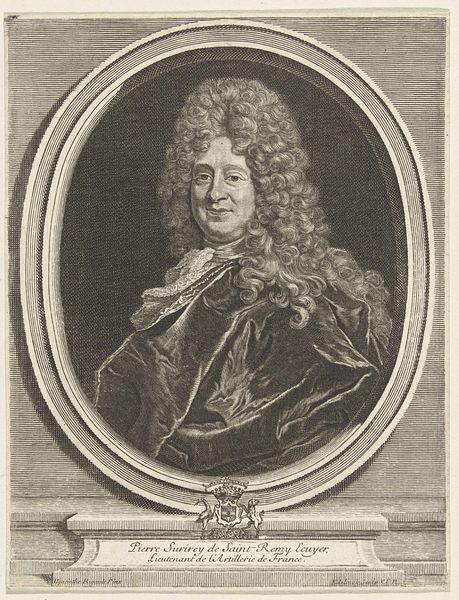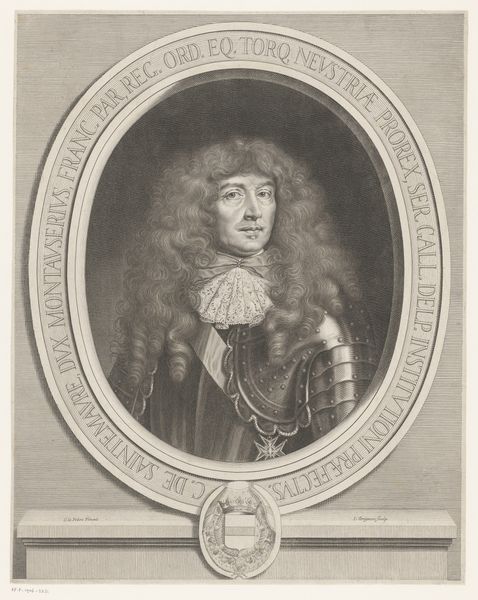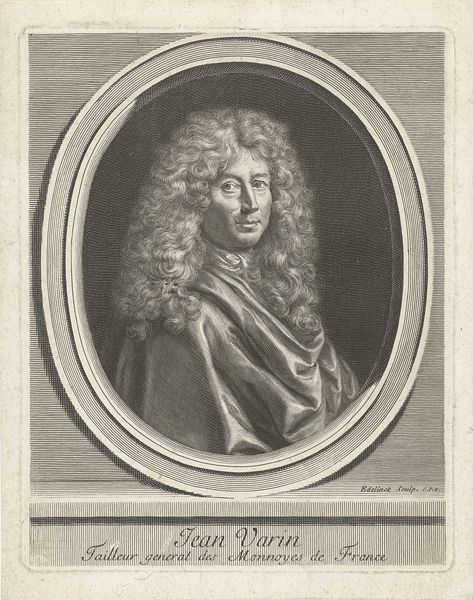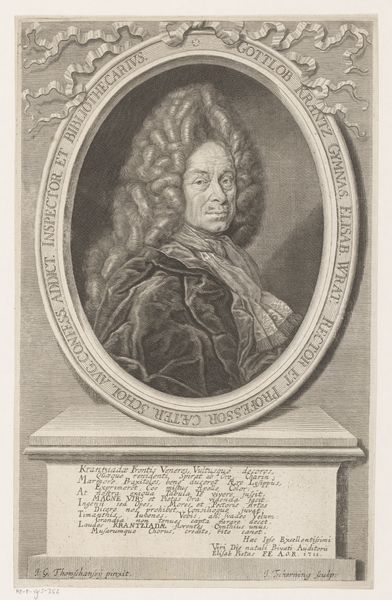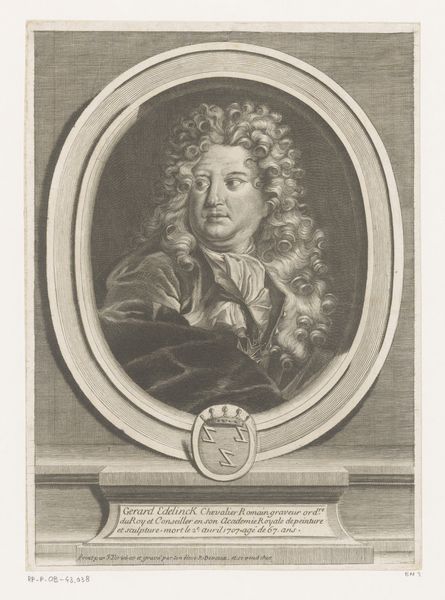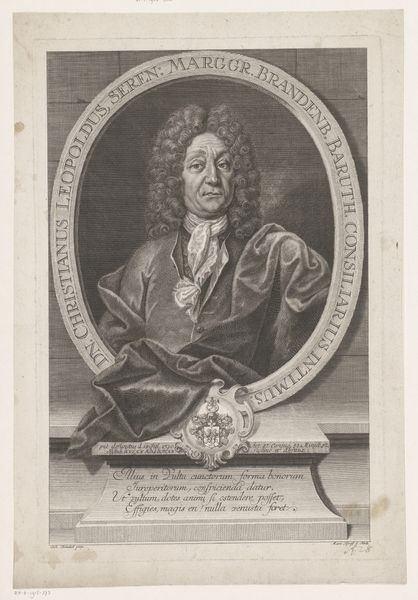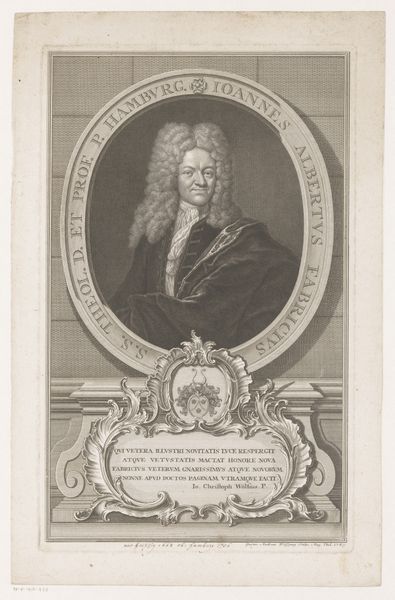
print, engraving
#
portrait
#
baroque
# print
#
old engraving style
#
portrait reference
#
19th century
#
history-painting
#
engraving
Dimensions: height 250 mm, width 192 mm
Copyright: Rijks Museum: Open Domain
Curator: This engraving, "Portret van Abraham Duquesne," by Gérard Edelinck, likely completed between 1666 and 1707, immediately strikes me as a study in contrasts. The flowing wig and delicate lace juxtaposed against the rigid, formidable armor create a fascinating tension. Editor: Yes, I find that clash so telling. What materials were accessible and valued at the time says so much, doesn't it? Edelinck is highlighting Duquesne's status, not only with his lavish wig but also with the polished gleam of that elaborate armor. It suggests resources and societal power meticulously constructed, piece by piece, very methodically. Curator: Precisely. Edelinck employs line weight masterfully. Observe how the delicate hatching in the face creates a sense of volume and life, compared to the more regimented lines defining the armor. It draws our eye directly to Duquesne’s expression, which, itself, seems rather… guarded, would you say? Editor: Guarded, but confident, certainly. It is difficult work to create the intricate patterns of shading, giving us a peek into how artisans communicated status and success in the naval fleet through material details such as Duquesne’s very presence, his presentation and gear—all manufactured goods with labor involved! Even the frame in the image speaks to presentation and intentional manufacture for viewership. Curator: And let us not overlook the compositional elements. The oval frame serves not only to contain the subject but to focus our gaze. Note the placement of the heraldic crest—a strategic marker of lineage and authority at the base. The framing acts to separate and elevate him as something special, reinforcing Duquesne's significance as a naval figure. Editor: This is exactly where an artwork really moves past representation: it highlights Duquesne as a leader while simultaneously cementing what's considered worthy in a community; we literally construct power through manufacturing, image, material, and portrait. The labor implied really expands outward—what resources made it possible, and at what cost? Curator: Indeed. Considering Edelinck's meticulous rendering of both the personal and symbolic elements within this piece offers a valuable framework for understanding the dynamics of 17th-century portraiture and naval identity. Editor: Ultimately, investigating production value brings us closer to appreciating how deeply intertwined visual art is with its historical and material roots.
Comments
No comments
Be the first to comment and join the conversation on the ultimate creative platform.
